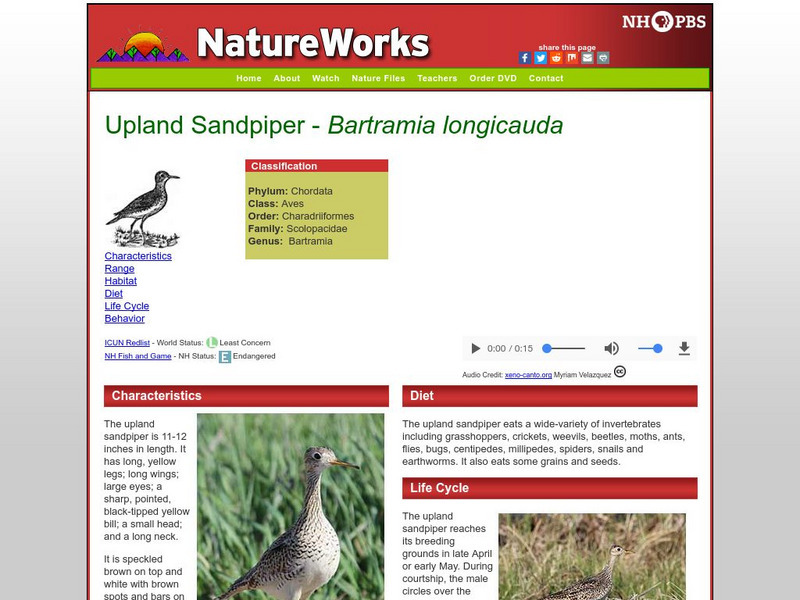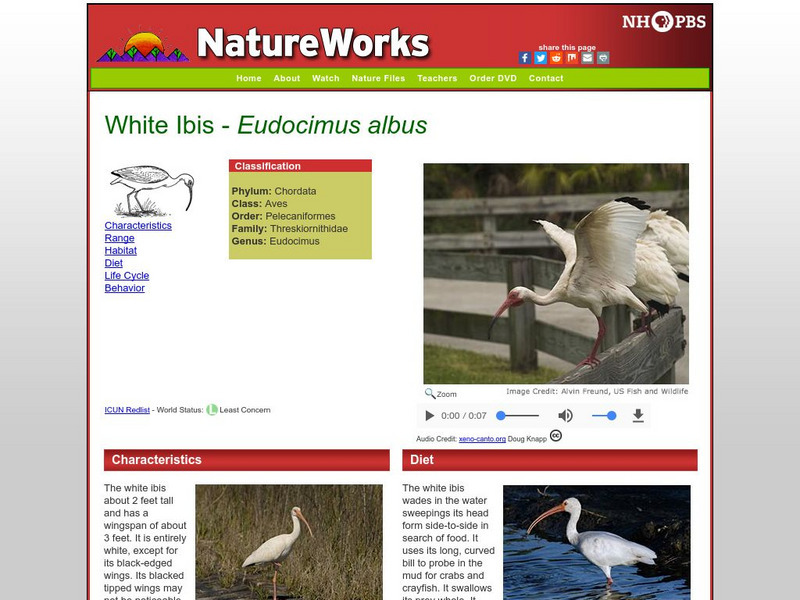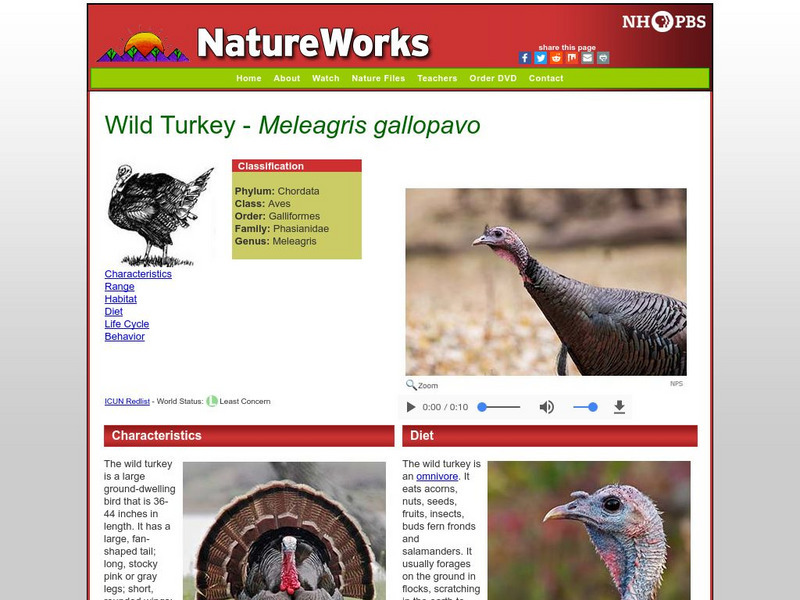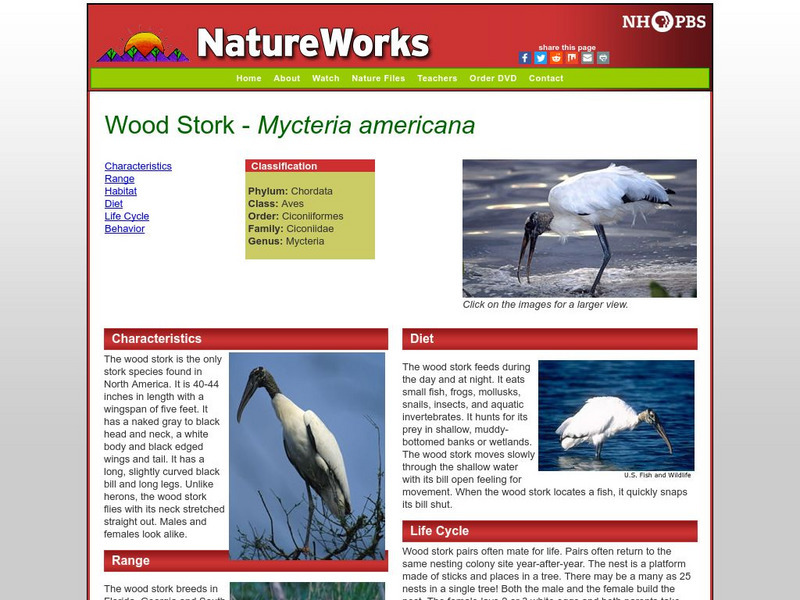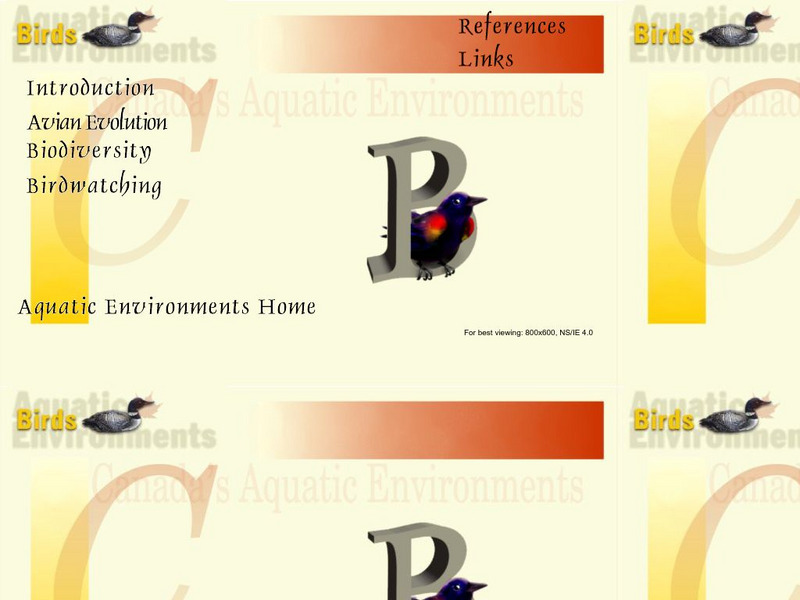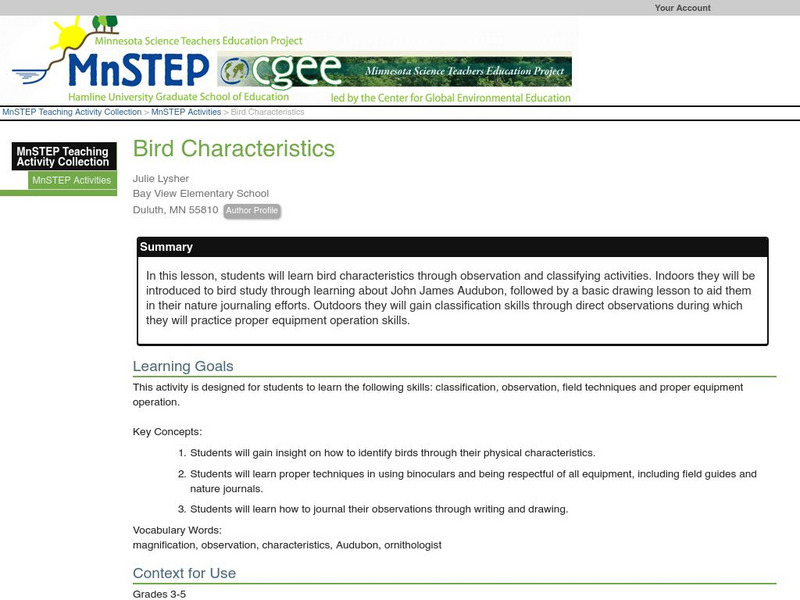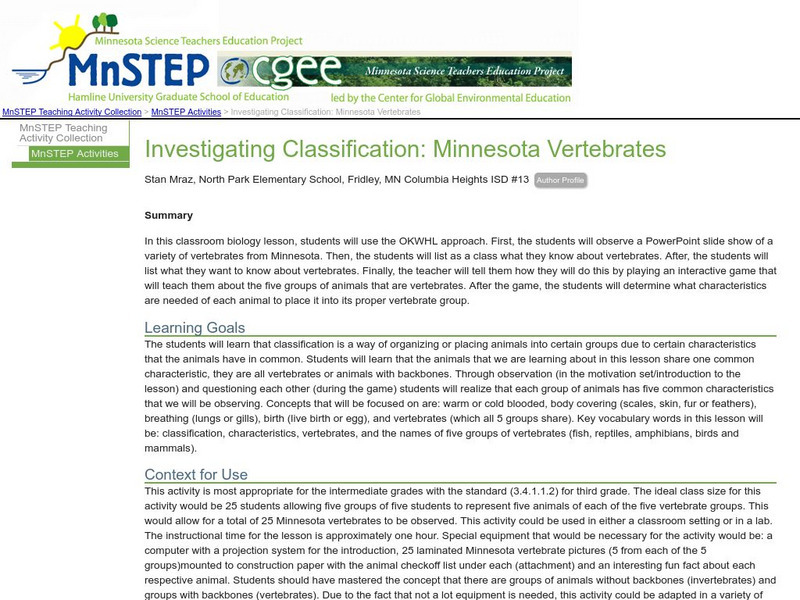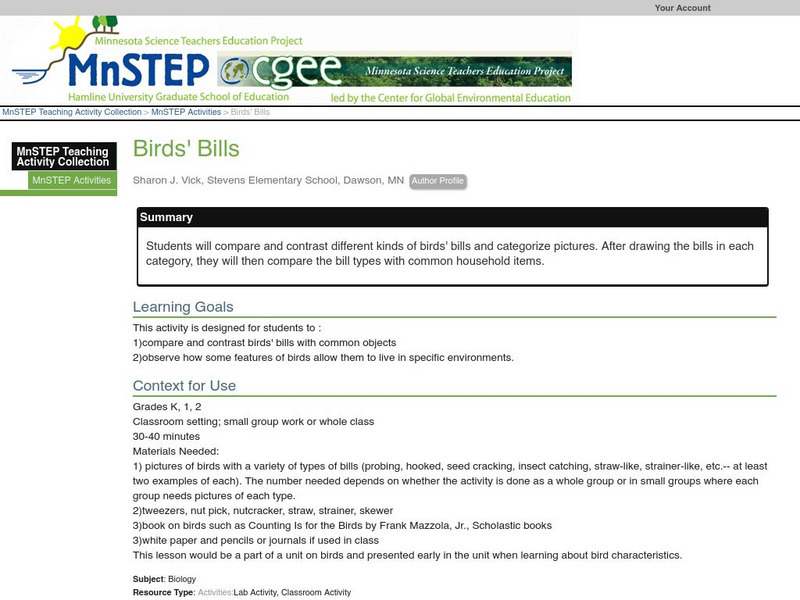PBS
Nh Pbs: Nature Works: Tree Swallow
Find out more about the Tree Swallow when you explore this clear and concise resource. This site features information ranging from characteristics and diet to behavior and life cycle. Don't miss out.
PBS
Nh Pbs: Nature Works: Upland Sandpiper
Explore the world of the Upland Sandpiper through this educational site. Learn more about this aquatic bird's characteristics, range, habitat, life cycle, diet and behavior.
PBS
Nh Pbs: Nature Works: Whimbrel
What characteristics make a Whimbrel unique? Find out more about this fascinating type of sandpiper when you visit this educational resource. This site features information ranging from diet and life cycle to behavior and habitat.
PBS
Nh Pbs: Nature Works: White Ibis
Come and check out this educational resource featuring the White Ibis. The content of this site includes information on characteristics, life cycle, diet, habitat, range and behavior of this aquatic bird.
PBS
Nh Pbs: Nature Works: White Tailed Ptarmigan
Explore the world of the White-tailed Ptarmigan when you check out this educational resource. The content of this resource includes a look at this species' characteristics, range, habitat, diet, life cycle and more.
PBS
Nh Pbs: Nature Works: Wild Turkey
This site provides an overview of the Wild Turkey. Learn more about this running bird when you explore this site filled with information ranging from characteristics, life cycle, diet, habitat, behavior and more. Check out the wonderful...
PBS
Nh Pbs: Nature Works: Willet
Dare to discover more about the Willet when you explore this site. The content of this resource looks at characteristics, life cycle, diet, habitat, behavior and range of this aquatic bird.
PBS
Nh Pbs: Nature Works: Wood Stork
Learn more about the Wood Stork through this educational source. Students will discover more about this wading bird's characteristics, life cycle, behavior, diet and more.
PBS
Nh Pbs: Nature Works: Yellow Crowned Night Heron
Come and check out this educational resource featuring the Yellow-crowned Night Heron. This site identifies the characteristics, life cycle, diet, habitat, range, behavior and photographs of this aquatic bird.
University of Guelph
Aquatic Environments: Birds
A great site for bird lovers or anyone seeking interesting information on birds. Provides links to other bird links such as bird species, descriptions, game and more!
Environmental Education for Kids
Eek!: Birds
Learn about birds the only way you can. A bird is a warm-blooded, egg-laying, winged vertebrate that has a body covered with feathers. Find out all about all of the different birds you can here.
PBS
Pbs Learning Media: An Ornithologist's Job
In this video segment from WILD TV, an ornithologist describes his job. [3:54]
Next.cc
Next: Birds
Multiple activities help students gain a better understanding of birds and their role in the food web. Click on the links provides for further exploration.
Science Education Resource Center at Carleton College
Serc: Bird Characteristics
In this lesson, students will learn bird characteristics through observation and classifying activities. Indoors they will be introduced to bird study through learning about John James Audubon, followed by a basic drawing lesson to aid...
Science Education Resource Center at Carleton College
Serc: Investigating Classification: Minnesota Vertebrates
This lesson serves as an introduction to classification. The students will place animals into its proper vertebrate group according to certain characteristics that the animals have in common.
Science Education Resource Center at Carleton College
Serc: Mn Step: What Is a Bird?
Students will investigate the characteristics of birds, what birds live in their schoolyard, and whether it is a suitable habitat for birds. This leads into a discussion of how to improve the schoolyard so it will attract more birds.
Science Education Resource Center at Carleton College
Serc: Birds' Bills
Students will compare and contrast different kinds of birds' bills and categorize pictures. After drawing the bills in each category, they will then compare the bill types with common household items.
Open Door Team
Open Door Web Site: Movement in the Air
A site on how birds fly discusses their anatomy that allows them to fly. Also discusses the role that feathers play in flight. Also includes a section which discusses other insects that fly.
InterKnowledge Corp.
Geographica.com: Adventure in Argentina
This site from Geographica.com contains information on a variety of parks in Argentina. A description of each follows the name of the park.
Missouri Botanical Garden
Missouri Botanical Garden: Tundra Animals
Explore this comprehensive resource on the birds and mammals of the tundra. This resource features information such as diet, class, order, size, habitat, conservation range and the like.
Other
Hilton Pond Center for Piedmont Natural History: Operation Ruby Throat
Be amazed at how these beautiful birds can be used to help students learn about science, math, geography and culture. Site is the most comprehensive one available about hummingbird natural history.
American Institute of Biological Sciences
Action Bioscience: Birds: What Can They Tell Us About Our Planet
Birds can offer hints to the health of the planet as they are found everywhere, migrate to many new environments, and play a role in our culture with their vibrant shades and sounds. Identify specific ways we can learn about our own...
abcteach
Abcteach: Animals
[Free Registration/Login Required] This link will place at your fingertips all kinds of resources for your science unit pertaining to animals such as birds, bugs, dinosaurs, endangered species, fish, mammals and reptiles.
Cynthia J. O'Hora
Mrs. O's House: Examine the Status of Local Birds
A lesson to research statistics of local birds to identify if any of the populations are in decline. Based on the research, students will recommend an action plan to help any populations which are struggling.



